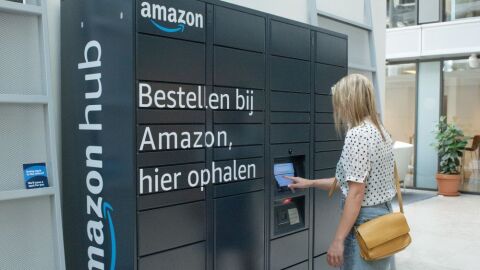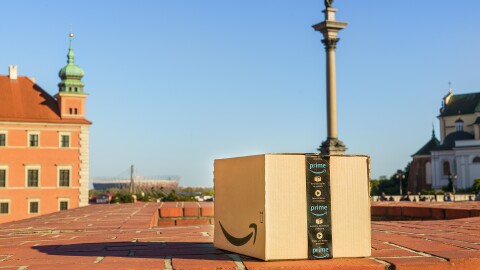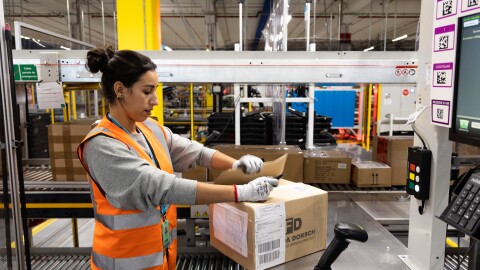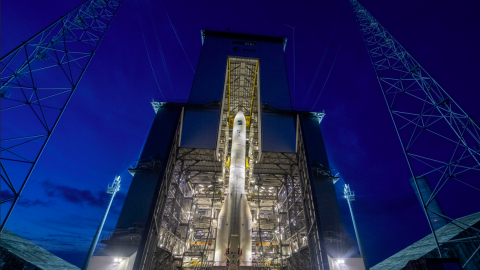Over the past 22 years, with the support of our customers, we have been able to invest and grow our presence in the UK. We wanted to share a snapshot of our broader economic impact in the UK during 2020, including our tax contributions, to provide a better understanding of our business and how we support the communities where we operate.
Our investment in the UK
Since 2010, we’ve made direct investments in our UK operations of more than £32bn. This includes both capital expenditure (such as the infrastructure we build, such as our fulfillment centers, corporate offices and data centers), and operating expenditure (such as the jobs we create in the UK). These direct investments raise the economic activity in a given region. This investment also creates a ripple effect through the economy as the firms that supply goods and services to Amazon expand and associated household spending increases.
Earlier this year we announced that we are creating a further 10,000 permanent roles across the UK in 2021, taking our total permanent workforce to more than 55,000. The new roles will be available at our offices and R&D centers in London, Manchester, Edinburgh, and Cambridge across a wide range of fields including digital marketing, engineering, video production, AI and machine learning, and more.
In operations, Amazon will open a parcel receive center and four new fulfillment centers, as well as continue to expand its delivery station network, creating thousands of new permanent roles on teams including engineering, HR and IT, health and safety, finance, and those that pick, pack and ship customer orders. Pay for Operations roles starts at a minimum of £11.10 p/h in the London area and £10.00 p/h in other parts of the UK. We also continue to invest in training and skills programs for our employees and this year we announced we would invest £10 million over three years to train to up to 5,000 employees as part of our Career Choice program.
In addition to our direct job creation, our investment indirectly supports a large number of jobs in our UK supply chain and across the network of sellers who have used our technology and services to grow their businesses through increased sales within, and beyond, the UK. Keystone’s economic research estimates that companies in Amazon’s supply chain (including, for example, in building services, property services and professional services) supported 164,000 additional job opportunities in 2020. Many of these job opportunities are in parts of the UK with a history of higher unemployment and lower investment.
Our business has also provided opportunities for over 65,000 UK-based small and medium-sized enterprises (SMEs) who sell their products in Amazon’s stores across the world and use the tools and services we build to help them grow. Around 65% of these businesses export to customers all over the world, and in 2020 alone, they achieved total export sales of more than £3.5bn and supported more than 175,000 job opportunities in the UK. If you combine our direct employment with these indirect employment effects, this means that Amazon enables employment for more than 380,000 people across the UK.
Last year, we also continued to see operating costs increase and globally we incurred more than $11.5bn in COVID-related costs as we invested in new safety measures and bonuses for our frontline employees, including building new on-site COVID-19 testing capabilities. In the UK, Amazon also contributed over £100m last year in support for charities, healthcare organizations and our local communities. This included leveraging our logistics network to deliver over to deliver four million healthy breakfasts to families around the UK and to deliver seven million test kits to homes around the country as part of the support we provided to the UK Government to boost testing capacity for COVID-19.
We also partnered with Enterprise Nation, to launch the Amazon Small Business Accelerator, a support package for more than 200,000 small businesses across the UK and donated 10,000 Fire tablets through our partnership with Teach First.
We also continue to invest heavily in renewable energy and sustainability initiatives, this includes 11 on-site solar systems powering our operations facilities across the UK with solar energy and a new 350 MW wind farm project off the coast of Scotland - the largest corporate renewable energy deal announced by any company in the UK to date.
All of these projects are part of Amazon’s ambition to power 100% of company activities with renewable energy by 2025—five years ahead of the original target of 2030. Investing in renewable energy is one of the many actions Amazon is taking as part of The Climate Pledge, a commitment to be net-zero carbon by 2040, 10 years ahead of the Paris Agreement.
Our tax contributions in the UK
As we continue to make investments in our UK operations and our growing workforce, we help fund public services and infrastructure throughout the country. We do this through the taxes that are collected by the Exchequer as a consequence of our activities in the UK. Those taxes fall into two categories:
- Directly incurred taxes: the taxes that are directly incurred and payable by Amazon, including Employer National Insurance, Business Rates, Corporation Tax, Import Duties, Stamp Duty Land Tax and Digital Services Tax; and
- Indirect taxes collected: the taxes we collect and remit from our customers, employees, and other third parties because of our business activities in the UK. These include VAT and the taxes paid by our employees through PAYE.
It’s important to understand each of these categories of tax, because indirect contributions to government revenue would not be collected (or generated to the same extent) if we did not offer services or products to our customers who are responsible for paying the tax in question, or if we did not procure goods and services from our suppliers on which such taxes are due.
This means that focusing on one aspect of taxation, such as Corporation Tax doesn’t tell the whole story. This is one of the reasons why PwC produces a total tax contribution study for The 100 Group (an organization which represents the Finance Directors of the UK’s largest companies, including many FTSE 100 firms).
This trend is particularly relevant for growing businesses like Amazon which continues to invest in its UK workforce and infrastructure. Amazon also has a high volume of sales, but operating profits remain relatively low due to price pressure in competitive markets and intense capital investment programs.
Most governments — including the UK Government—actively encourage companies to make investments in infrastructure and job creation, and they often use the taxation system to do so. Capital allowances and R&D credits are designed to stimulate the kind of investment necessary to grow the economy and create jobs. These reduce Corporation Tax, however this is more than made up for by the increased tax revenue or lower costs for the Government in other areas.
For the past two years we have published our UK investments, directly incurred tax charge and indirect taxes collected. Below we have outlined our contribution for the full year to 31 December 2020:
- In 2020, the total revenues of Amazon’s activities in the UK were £20.63bn (2019: £13.73bn).
- We also invested more than £1.6bn (2019: £690m) in the UK as we continued to expand our operations network and infrastructure.
- Our total tax contribution (combining directly incurred and indirect taxes) was £1.55bn (2019: £1.15bn).
- Our total directly incurred taxes were £492m (2019: £293m). Employer taxes accounted for the largest proportion of these. Other direct taxes included the Digital Services Tax, Business Rates, Corporation Tax, and other taxes such as Stamp Duty Land Tax and Import Duties. Increases in 2020 were largely driven by headcount growth, the expansion of our real estate footprint and sales growth.
- The indirect taxes we collected were an additional £1.06bn (2019: £854m) as a result of our business activities in the UK. Increases during 2020 were largely driven by Net VAT due to an increase in sales, and an increase in employee taxes as the result of headcount growth and wage increases.
In addition, we also assist third-party sellers with the collection and payment of VAT in the UK. We haven’t included those numbers in our indirect tax figure to date since these taxes have been paid by third parties to HMRC up until the end of 2020. From 1st January, Amazon has been charging, collecting and remitting UK VAT on physical goods transactions to UK customers made by overseas sellers on Amazons online stores.
We are proud of the significant economic contribution we are making to the UK economy. Looking ahead, we know that the UK remains full of opportunity and we continue to be excited by the potential to continue to invest, create jobs, develop talent and have a positive impact in communities across the country.











